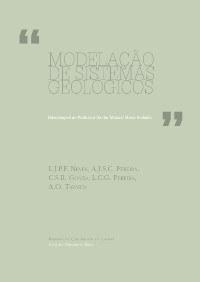Please use this identifier to cite or link to this item:
https://hdl.handle.net/10316.2/36291| DC Field | Value | Language |
|---|---|---|
| dc.contributor.author | Fallick, Anthony | |
| dc.contributor.author | Melezhik, Victor | |
| dc.contributor.author | Simonson, Bruce | |
| dc.date.accessioned | 2015-04-07T16:40:51Z | |
| dc.date.accessioned | 2020-09-09T13:30:31Z | - |
| dc.date.available | 2015-04-07T16:40:51Z | |
| dc.date.available | 2020-09-09T13:30:31Z | - |
| dc.date.issued | 2011 | - |
| dc.identifier.isbn | 978-989-97106-0-3 | |
| dc.identifier.isbn | 978-989-26-1009-2 (PDF) | |
| dc.identifier.uri | https://hdl.handle.net/10316.2/36291 | - |
| dc.description.abstract | A compilation of over 400 carbon isotope analyses of carbonates associated with Banded Iron Formations (BIF) reveals a strong major mode at δ13C ~ -7‰ (VPDB), a second major mode at δ13C ~ -10‰, and a minor mode at δ13C ~ -1‰. The minor mode is readily attributed to contemporaneous marine bicarbonate, perhaps slightly modified by mixing with carbon of lower δ13C (i.e. < 0‰). We compared the two major modes with literature examples of the structure of histograms of δ13C of secondary carbonate cements from Phanerozoic sandstones which are hydrocarbon reservoirs. The processes and mechanisms responsible for the predominant modes in the sandstone cements δ13C are thought to be reasonably well understood. Whereas the BIF-mode at δ13C ~ -10‰ corresponds to the most salient mode in the Jurassic cements (also δ13C ~ -10‰) and is accordingly ascribed to deep burial (thermal) remineralisation of organic matter, the BIFmode at δ13C ~ -7‰ is not prominent in the sandstone cement compilations. We suggest it is attributable to a hydrothermal source. We conclude that the BIF-carbonate data can be explained without invoking a significant carbon source from biogenic processing of organic matter during shallow burial. We note that the absence of such microbial recycling of organic matter would preclude significant accumulation of biogenic CH4 in the sediments until a vibrant community of appropriate obligate anaerobes became established in the subsurface. | eng |
| dc.language.iso | eng | - |
| dc.publisher | Imprensa da Universidade de Coimbra | por |
| dc.relation.ispartof | http://hdl.handle.net/10316.2/36282 | por |
| dc.rights | open access | - |
| dc.subject | Proterozoic | eng |
| dc.subject | Carbon isotopes | eng |
| dc.subject | Banded Iron formations | eng |
| dc.title | On proterozoic ecosystems and the carbon isotopic composition of carbonates associated with Banded Iron Formations | por |
| dc.type | bookPart | por |
| uc.publication.firstPage | 57 | - |
| uc.publication.lastPage | 71 | - |
| uc.publication.location | Coimbra | por |
| dc.identifier.doi | 10.14195/978-989-26-1009-2_4 | - |
| uc.publication.section | Parte I: Conferências | por |
| uc.publication.digCollection | PB | por |
| uc.publication.orderno | 4 | - |
| uc.publication.area | Ciências Naturais | por |
| uc.publication.bookTitle | Modelação de sistemas geológicos: livro de homenagem ao Professor Manuel Maria Godinho | - |
| uc.publication.manifest | https://dl.uc.pt/json/iiif/10316.2/36291/209098/manifest?manifest=/json/iiif/10316.2/36291/209098/manifest | - |
| uc.publication.thumbnail | https://dl.uc.pt/retrieve/11147893 | - |
| uc.publication.parentItemId | 54495 | - |
| uc.itemId | 69854 | - |
| item.grantfulltext | open | - |
| item.fulltext | With Fulltext | - |
| Appears in Collections: | Modelação de sistemas geológicos: livro de homenagem ao Professor Manuel Maria Godinho | |
Files in This Item:
| File | Description | Size | Format | |
|---|---|---|---|---|
| on_proterozoic_ecosystems_and_the_carbon.pdf | 2.18 MB | Adobe PDF |  |
Items in DSpace are protected by copyright, with all rights reserved, unless otherwise indicated.
